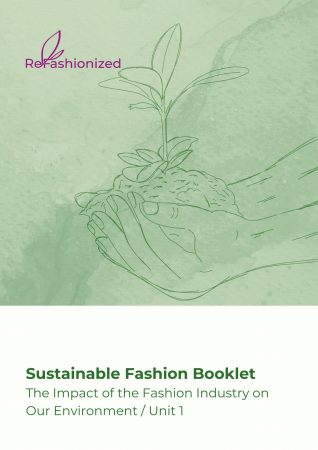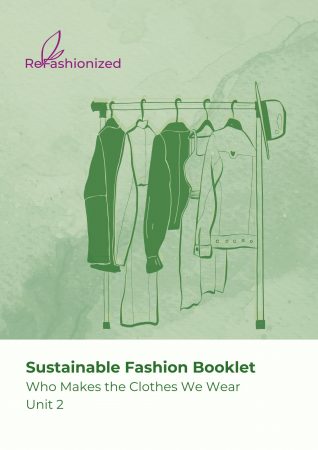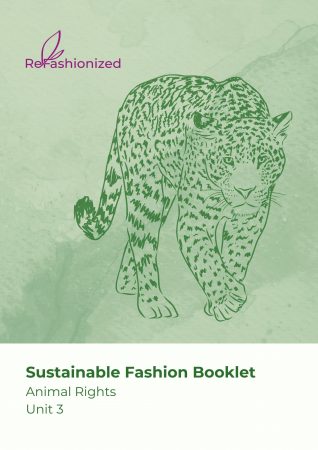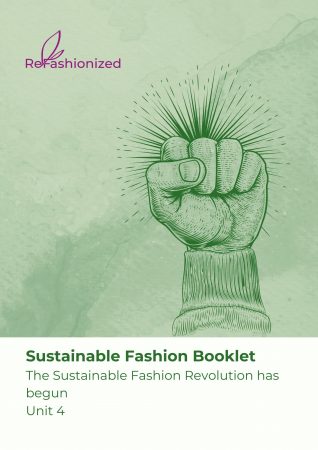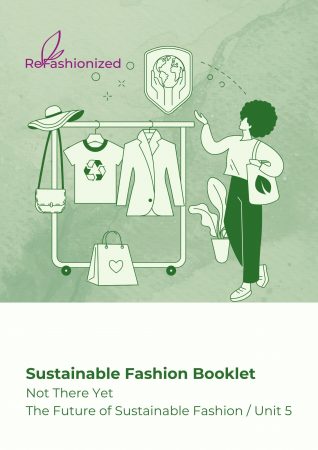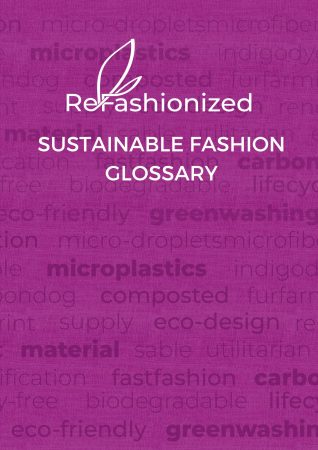Sustainable Fashion and training materials
The Sustainable Fashion Booklet consists of 5 units focused on the environmental and social impact of the fashion industry today, as well as the protective measures currently being implemented and the measures and policies that should be followed in the near future.
Each unit is accompanied by training materials, including a PowerPoint presentation, a workshop plan with interactive exercises, additional resources, and inspiring real-life success stories.
The Impact of the Fashion Industry on Our Environment
Unit 1
Today, the fashion industry is immersed in the dominant paradigm of growth derived from over-consumption by users. This model is based on a linear, largely wasteful economy, characterised by accelerated processes of large-scale production, consumption, and disposal (Brydges, 2021). The fashion industry is the second most polluting industry in the world, after the oil industry. The insatiable demand for new trends and the rapid obsolescence of fashion contribute to the massive exploitation of natural resources, the relentless consumption and pollution of water, and the emission of greenhouse gasses (Fashion & Environment, n.d.).
Who Makes the Clothes We Wear
Unit 2
Few people today think about where the clothes they buy come from and the conditions of the workers who make them. Because of low production costs, some major fashion brands produce their clothes in several countries with little regard for human rights and working conditions.
Animal Rights
Unit 3
The fashion industry has always been clashing with the principles of animal rights, primarily due to the extensive use of animal-derived materials like fur, leather, silk, and wool. However, in recent years with increasing awareness and shifts in consumer behavior, it has been inevitable to integrate animal rights into fashion. In the 20th century advocacy groups and activists brought attention to the cruelty associated with animals for the sake of fashion. As a result, public awareness and concern about animal rights grew, and governments and regulatory bodies started to implement laws and regulations to address animal welfare in fashion (Ferreira, 2016). As people become more aware of the abuse suffered by animals in the fashion industry, consumer behavior is evolving.
The Sustainable Fashion Revolution has begun
Unit 4
The fashion industry stands at a pivotal moment in history. The rise of sustainable fashion can be traced back to the early 2000s when more people in the fashion industry and customers began to challenge the status quo of the fashion industry. This led to the emergence of many pioneering sustainable fashion brands, such as Patagonia, Eileen Fisher, and Stella McCartney, who were committed to creating clothing and accessories that were both stylish and sustainable. With growing concerns over environmental degradation, social injustice, and ethical practices, a revolution is underway (Prasath, 2022).
Not There Yet The Future of Sustainable Fashion
Unit 5
In an increasingly environmentally aware and concerned world, the future of sustainability in the fashion industry is a major challenge. From the rise of eco-friendly materials to innovative production practices, fashion is undergoing a transformation towards environmental and social responsibility.
SUSTAINABLE FASHION GLOSSARY
The Glossary of the Sustainable Fashion Booklet provides clear and simple explanations of key terms and concepts in sustainable fashion. Designed as a complementary resource to the booklet’s units, it serves as a valuable tool for trainers, educators, and enthusiasts. Together, the glossary and the units content work seamlessly to inspire readers to actively contribute to a more ethical and sustainable future for fashion.
Looking for a tailored solution?
To receive the presentation in PPT format, tailored with relevant content for your training needs, feel free to contact us at info@jkpev.de


